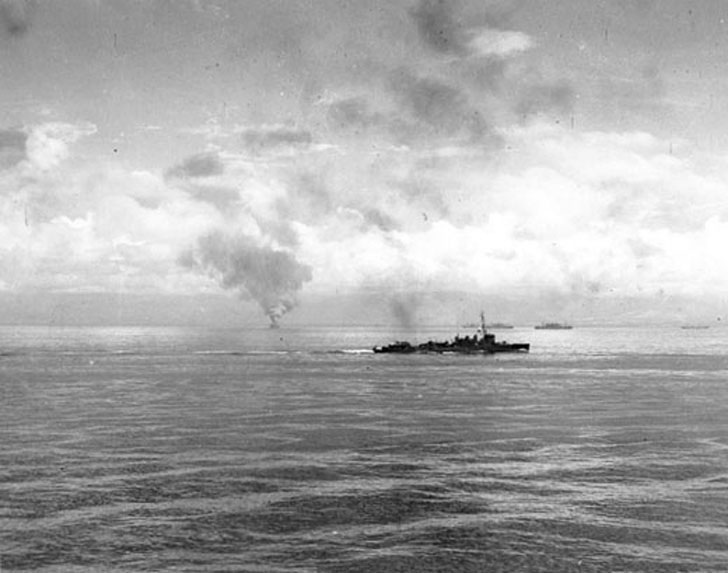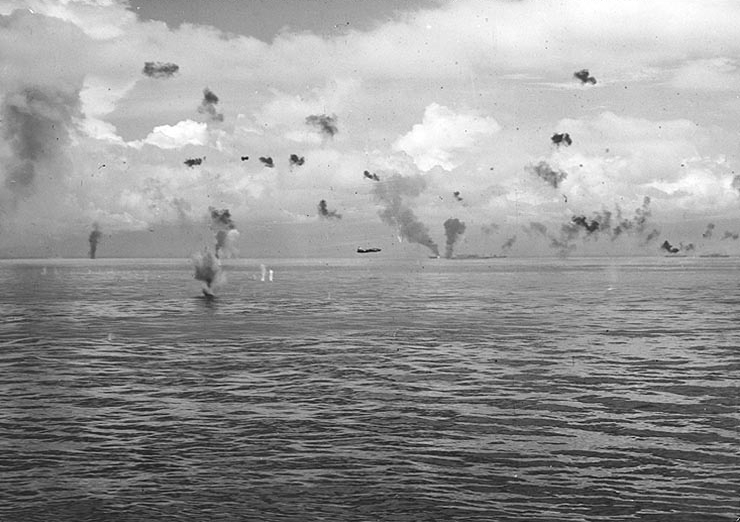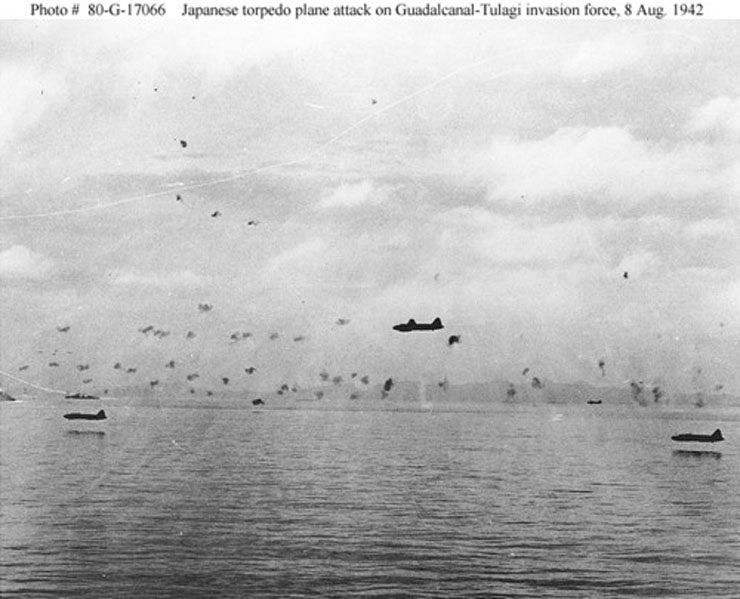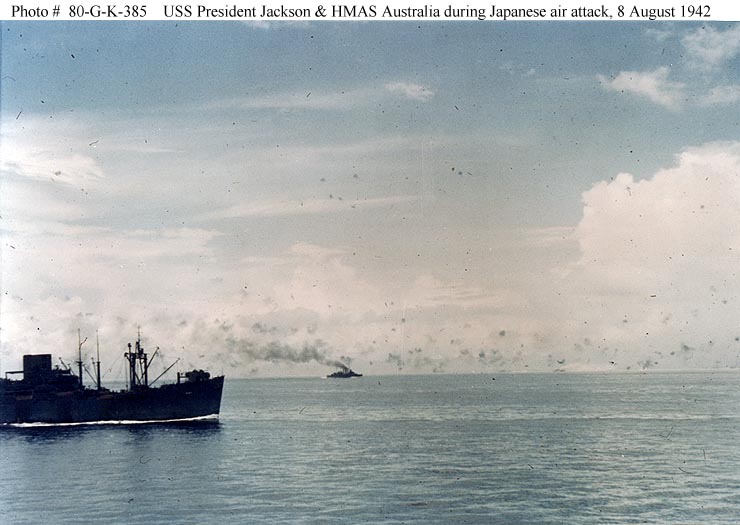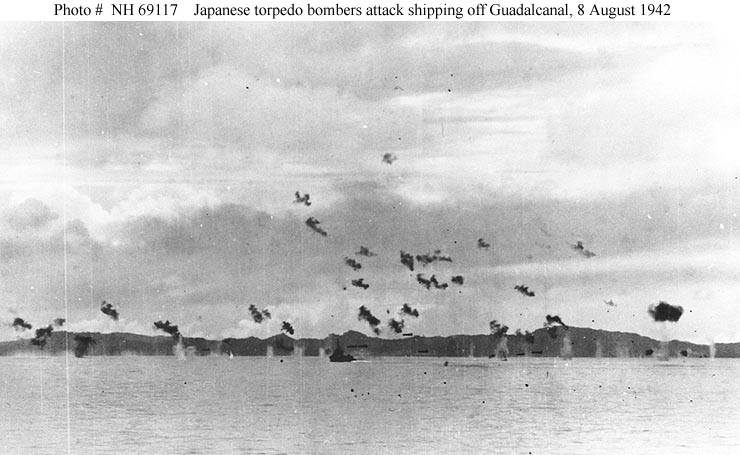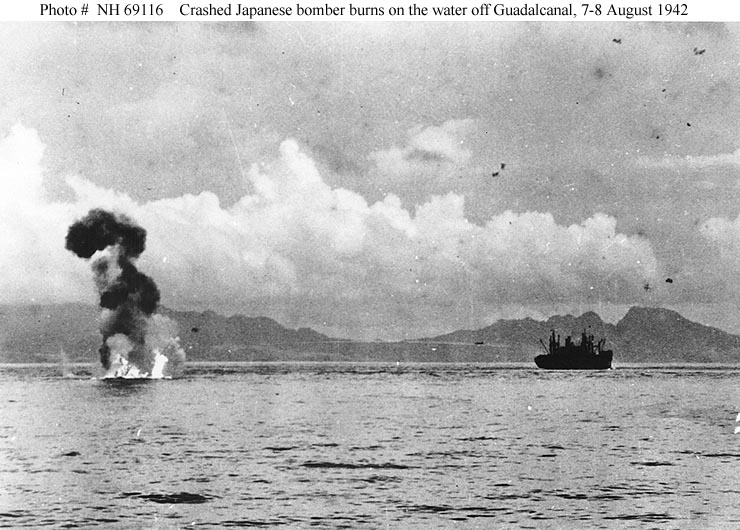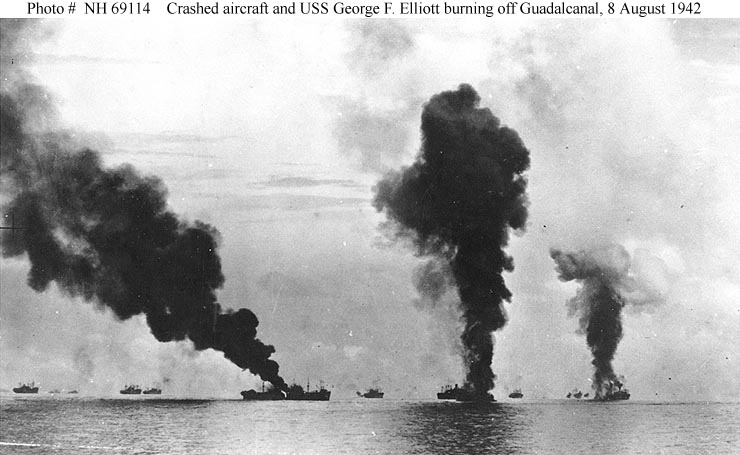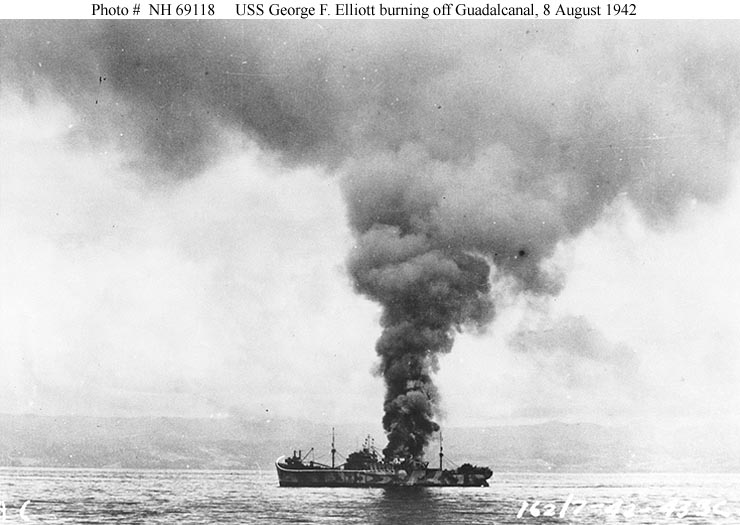Air Operations, Aleutians
Patrol Wing 4 PBYs attack a freighter, a transport and ground targets at Kiska.
[Air Operations, Asia
US planes attack Japanese installations in Canton, China.
[Air Operations, CBI
11th Medium Bomb Squadron B-25s attack the Tienho airfield at Canton and other targets in the Canton area. 23rd Fighter Group P-40s, in an escort role, shoot down Japanese fighters over Canton.
[Air Operations, Europe
BOMBER COMMANDEvening Ops:
- 12 Lancasters lay mines in Kiel Bay and off Denmark
- No losses
Air Operations, New Guinea
5th Air Force B-17s, B-25s and 22nd Medium Bomb Group B-26s attack the airfields at Lae and Salamaua and other targets of opportunity. 32 35th Fighter Group P-400s bomb and strafe ground targets at Kokoda and Yodda.
[Air Operations, Solomons
23 torpedo-laden G4M 'Betty' bombers and 15 escorting A6M Zeros from Rabaul attack the Allied fleet off Guadalcanal at 1156 hours. Vf-6 F4Fs down 4 'Bettys' and 1 Zero and an SBD gunner is credited with downing another Zero. Despite these victories and 13 other 'Bettys' brought down by ships' fire, 1 US Navy destroyer is severely damaged by a torpedo and a transport is set afire and runs aground after a severely damaged Zero crashes into it.
[Allied Command
Roosevelt and Churchill agree that Gen Eisenhower shall lead Operation TORCH, the Allied invasion of North Africa.
[Battle of the Atlantic
- A dozen mines are laid near St John's Lightship off Jacksonville, Florida by a German submarine. They are discovered 3 days later and destroyed.
- The US freighter Kaimoku, en route to Liverpool in Convoy SC-94, it torpedoed and sunk by shellfire from U-379 losing 2 of her crew and 2 of the Armed Guard in the attack. The survivors are rescued by the Canadiand corvette HMCS Battleford.
Eastern Front
Army Group A continues to drive south as well as consolidate its gains near the Kuban River. Army Group B captures Surovniko, west of Stalingrad. The Germans reach the Maikop oilfield in the Caucasus, which has been destroyed.
CENTRAL SECTORZubtsov falls to the Soviets after a costly battle. The Germans restore their lines east of Sychevka, having repelled the massed Soviet armored forces.
SOUTHERN SECTORThe German attacks in the Don Elbow takes Surovniko as the XIV and XXIV Panzer Corps penetrate into the flanks of the 62nd Army and the 1st Tank Army. Soviet armored losses are crippling as the Luftwaffe pounds Soviet movement.
[India, Politics
The Indian Congress asks for independence from Britain.
[New Guinea
Kokoda is temporarily recaptured from the Japanese by a mixed force of Australian and Papuan troops.
[North Africa
Churchill appoints Gen Alexander to succeed Gen Auchinleck as Commander-in-Chief, Middle East. Auchinleck is sent to command the Iraq-Persia sector.
[Secret War
6 German agents, arrested after landing by submarine on the US east coast, are electrocuted. 8 saboteurs had been put ashore on Long Island and Florida but were quickley apprehended by the FBI. The 2 others are given life sentences instead of being executed because of cooperating with the government.
[Solomons
The remainder of the first American wave lands on Guadalcanal. The forces advancing inland easily seize the village of Kukum and the Japanese airstrip which is renamed Henderson Field. The capture of Tulagi, Gavutu and Tanambogo is completed. Waves of Japanese aircraft attack the American naval forces carrying the landing force, sinking the transport George F. Elliott (AP-13) and damaging the transport Barnett (AP-11) and the destroyer Jarvis (DD-393), which sinks the next day trying to reach Noumea. Because of the intense air and submarine activity. Fletcher decides, probably incorrectly, to withdraw his carriers but the cruisers and transports near Guadalcanal remain.
The Japanese have failed, however, in their aim of attacking the transports unloading off Lunga Point. The transports are withdrawn because of the Japanese threat. The Marines are left very short of heavy equipment and with only about half their supplies.[MORE]
|
|
|
|
|
|
|
|
Destroyer Crewmen Looking at Wreckage of Japanese Plane |
 |
